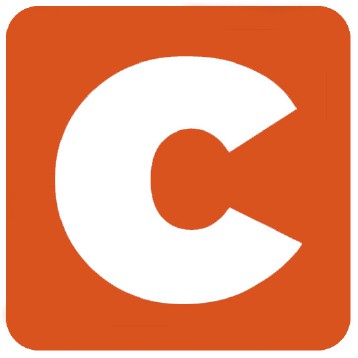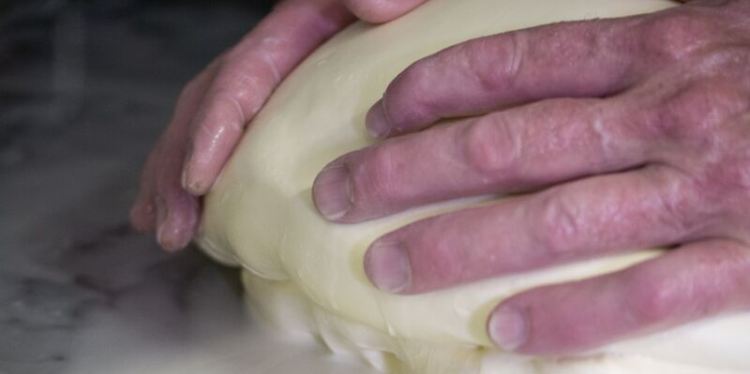
The routine of cheesemaking is like a well choreographed dance—tempo, timing, and fluid movements all weave together, producing dynamic (and delicious) days filled with milk, curds, and cheese. There’s the science (of course), and also a whole lot of skill.
After my first day in the Parish Hill cheese house, I had an idea of the skill involved to create their beautiful cheeses, but after a second day (and getting my hands on the curds), I am in awe of what it takes to shape and produce good-looking (and good-tasting) cheese.
On Day 2 things got dreamier, stretchier, and curdier with Suffolk Punch (in the Caciocavallo style) and Kashar (a classic basket provolone). Here’s a look at the process:
Like a dream—one where you are suddenly dropped into the middle of an action scene—this day begins after the milking, testing, cultures, rennet, and flocculation.
Milk is turning solid and dairy magic is in full swing.
First, the stirring.
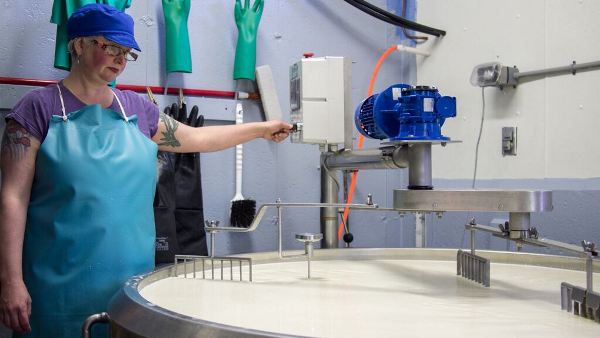
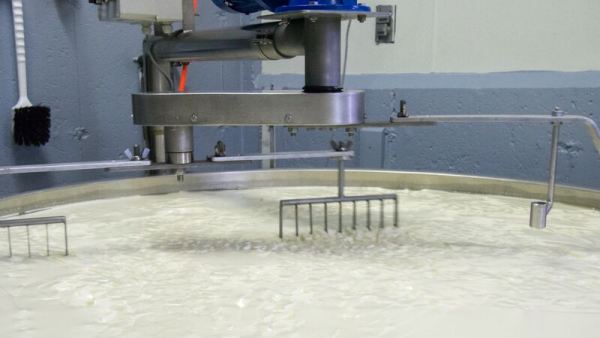
Once the curds are at the right size, the whey is drained, slowly exposing layers and layers of tiny curd.
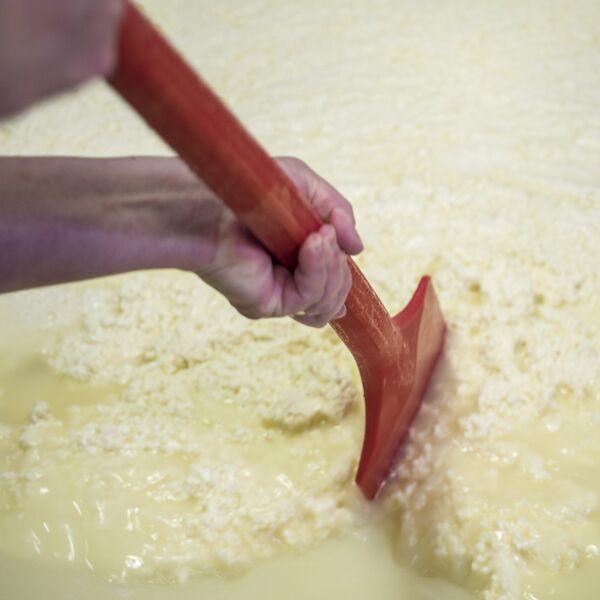
As more of the whey drains and the curds set, they are cut into sheets.
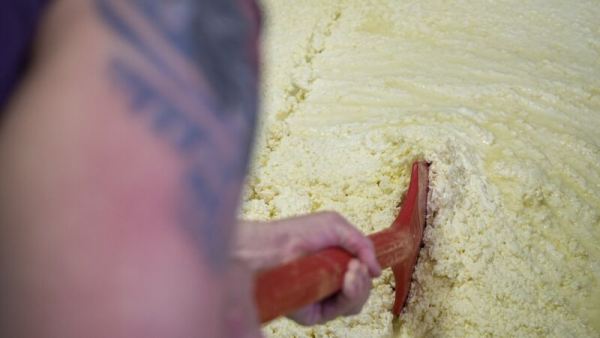
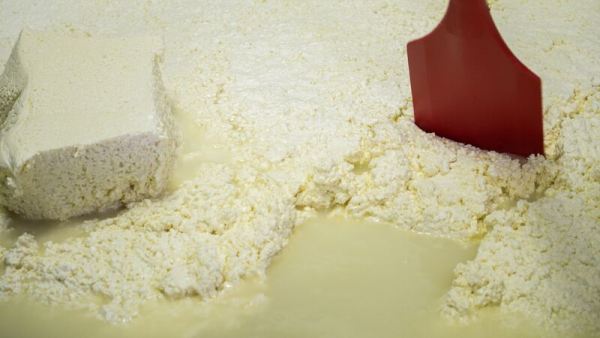
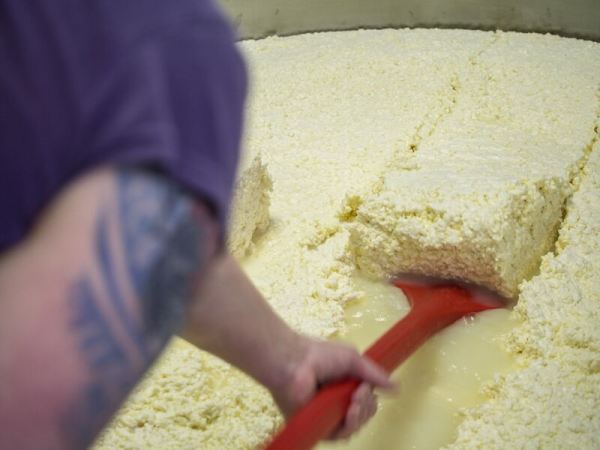
As the blocks are cut, they are stacked and flipped on each other in the vat.
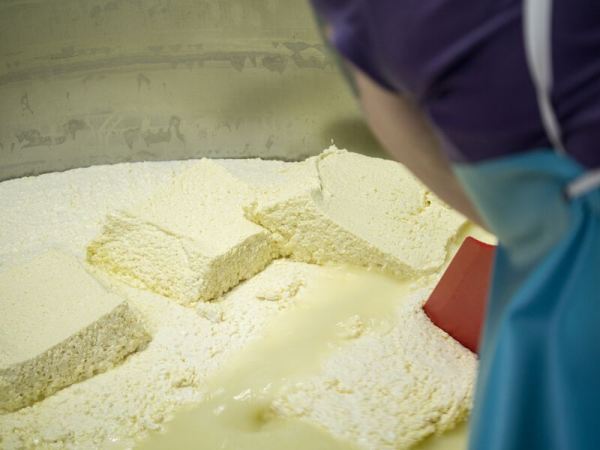
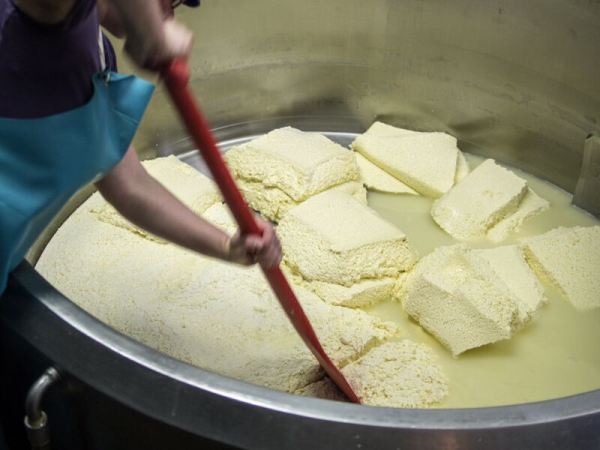
When all the whey has been drained and the sheets have had a chance to sit and be flippped for a little, they are lifted out of the vat and transferred to the table…

…for more sitting and flipping…
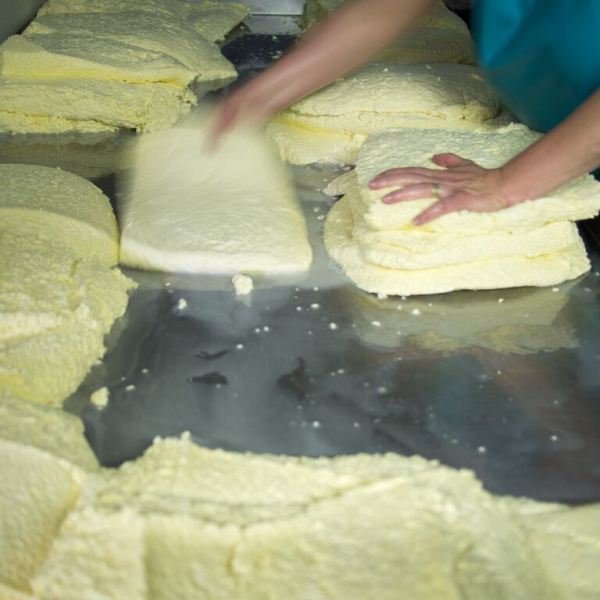
Soon, it’s cutting time.
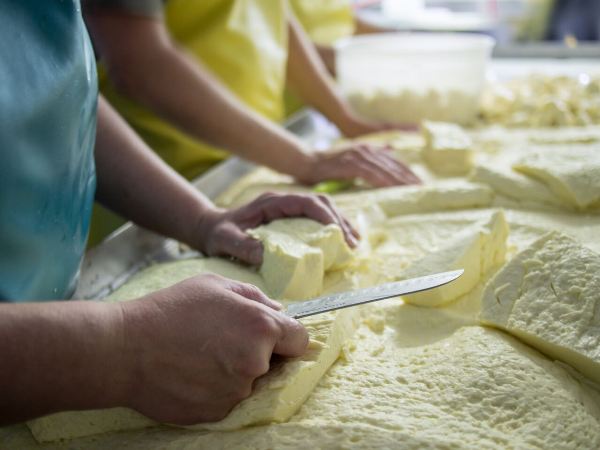
The curd sheets are cut into cubes, put into baskets, and dropped back into hot water to soften them up for stretching.

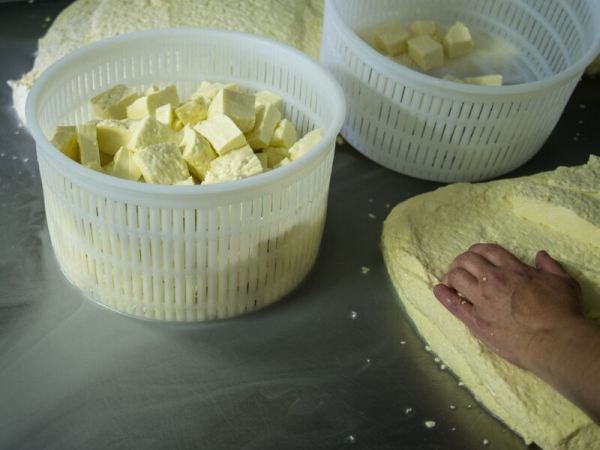
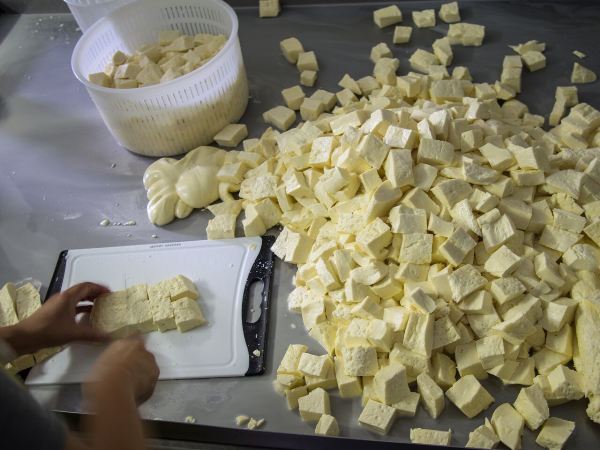
When the curds come out of the hot water, they are pressed and kneaded to texture perfection.
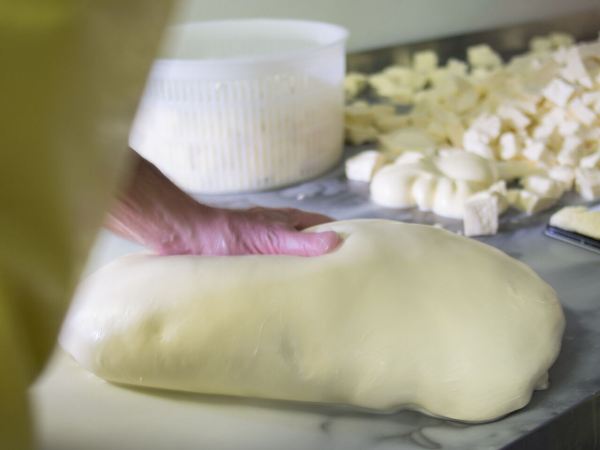
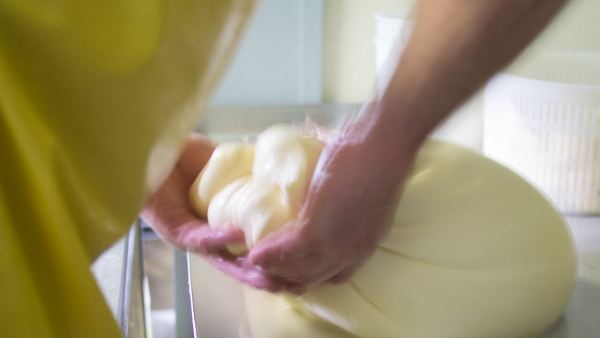

The large loaf is then cut into pieces dropped into baskets for Kashar or shaped like gourds for Suffolk Punch.
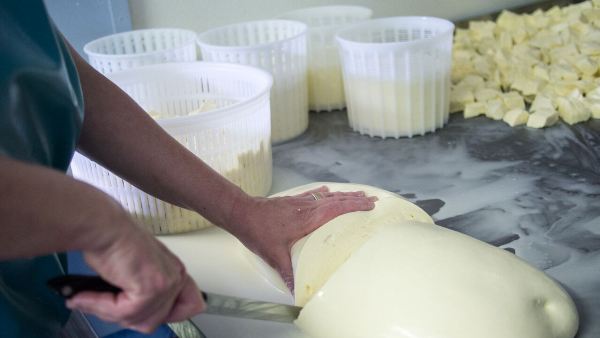
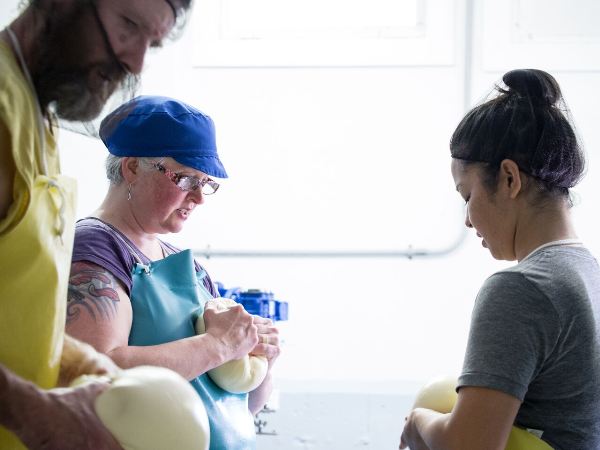
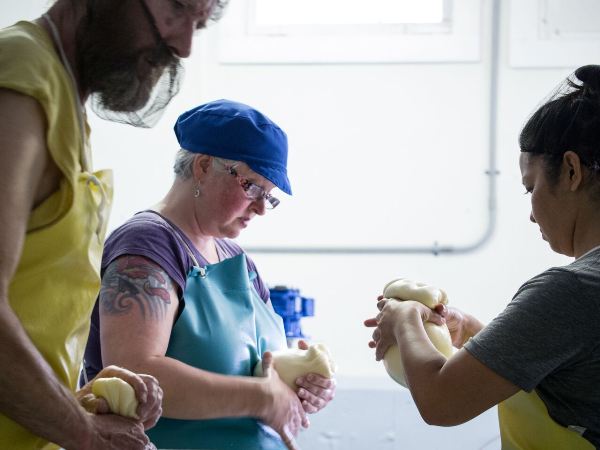

Once the gourds are shaped and the baskets are filled, everything finds its way back in the vat to hold before the trip to their final aging place…
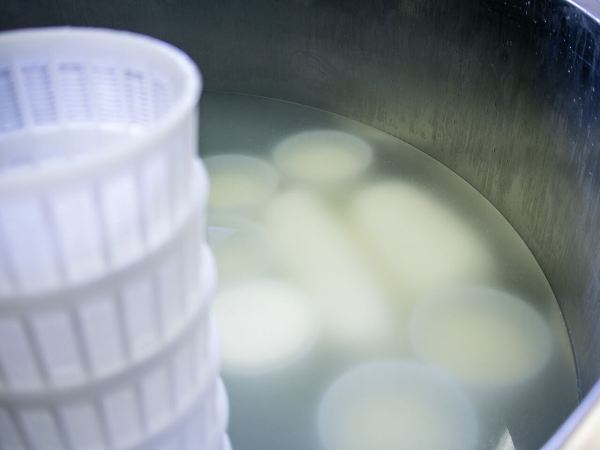
The cave!
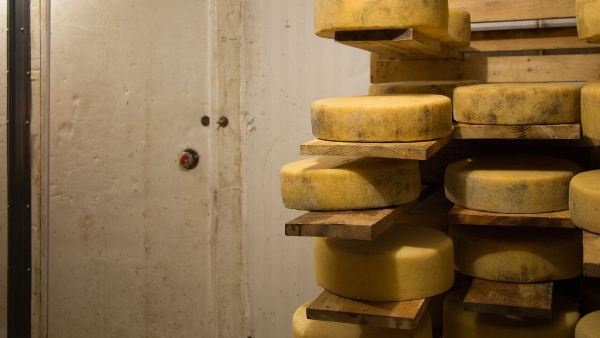
Next post, we’ll spend some time in the Parish Hill caves, getting a peek into how they spend their aging months.
All Photos: Daniel J. Clapp


